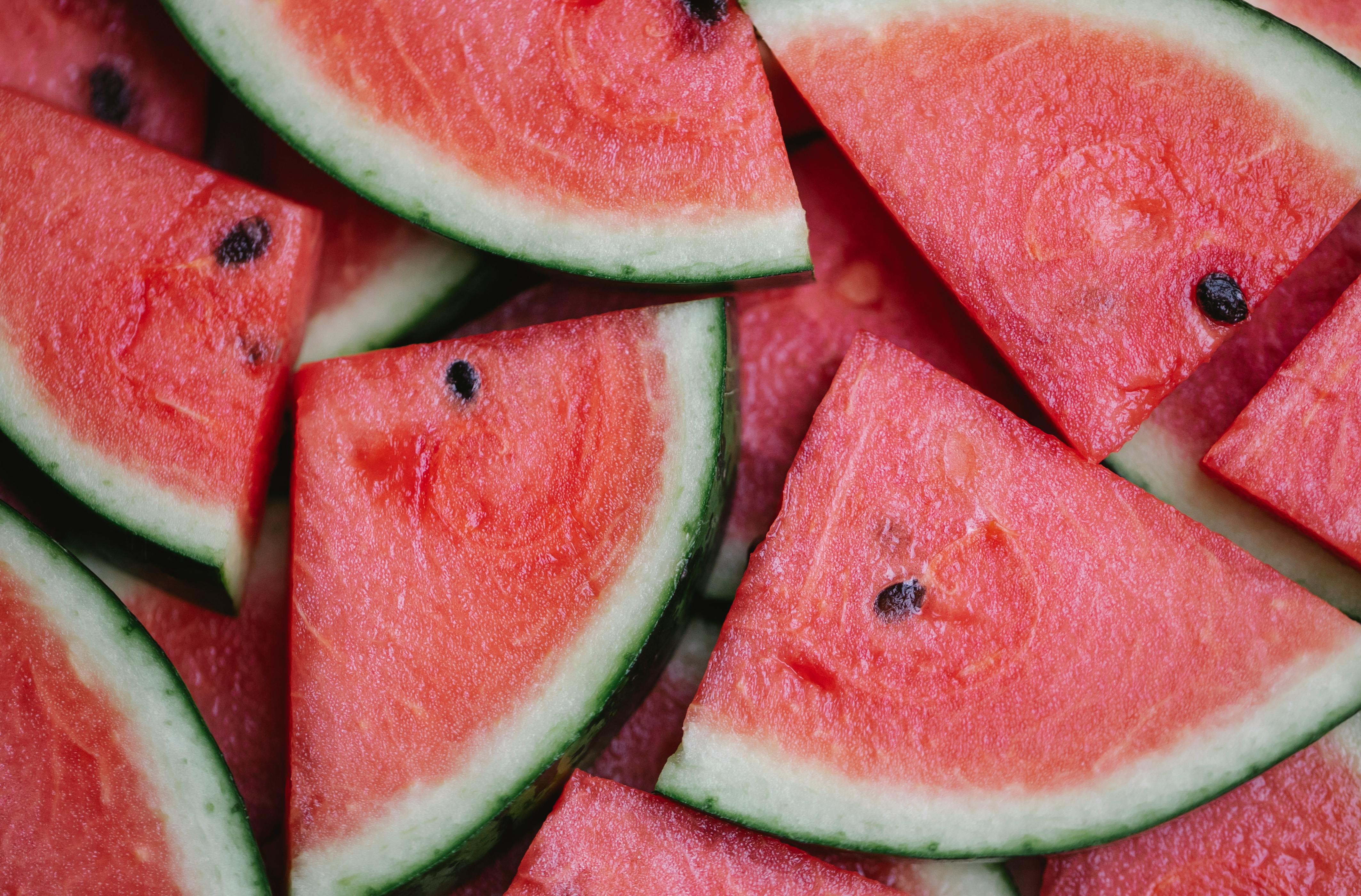May is a great month for fresh fruit and vegetables! From sweet strawberries and juicy peaches to crunchy broccoli and flavorful leeks, May is filled with a variety of delicious produce. Whether you’re looking for something crunchy to snack on or need an ingredient for a special meal, there are plenty of fruits and vegetables in season during May. In this article, we’ll explore some of the best May fruits and vegetables so you can make the most of the season!May is the month of abundance when it comes to fruit. Many fruits come into season in May and some may even stay in season until June. Examples of fruits that are typically in season during May include apricots, blackberries, blueberries, cantaloupe, cherries, mangoes, peaches, raspberries, strawberries, and watermelons.
May Vegetables In Season
May is the perfect time to enjoy some of the freshest and most flavorful vegetables that are in season. Springtime brings with it a bounty of delicious produce, from asparagus and artichokes to spinach and snow peas. Whether you’re planning a meal for your family or trying to get creative with your cooking, these May vegetables are sure to be a hit.
Asparagus is one of the most popular vegetables this time of year, and for good reason. It’s full of vitamins A, C, and K, as well as iron and fiber. It can be grilled, roasted, or steamed for a delicious side dish or added to salads or soups for extra flavor.
Artichokes are an excellent source of vitamin C and fiber. They have a unique flavor that pairs well with many dishes. Artichokes can be boiled or steamed before adding them to salads or pasta dishes for extra flavor and texture.
Spinach is another popular spring vegetable that’s full of vitamins A and C as well as iron and calcium. It has a mild flavor that goes well with many dishes like salads, quiches, omelets, casseroles, soups, lasagna, pizza topping, or even smoothies.
Snow peas are great for adding texture to stir-fries or salads. They’re full of vitamins A and C as well as fiber and iron. Snow peas can also be eaten raw or lightly steamed for a crunchy snack.
These May vegetables are sure to please everyone’s palate! Enjoy them fresh while they’re in season—you won’t regret it!
Types Of Fruits Available In May
May is a great month for fruit lovers, as it brings an abundance of sweet and juicy fruits. From May to June, you can enjoy an array of seasonal fruits that you won’t find at any other time of the year. Some of the most common fruits available in May include strawberries, blackberries, blueberries, cherries, raspberries, peaches, plums, apricots and nectarines.
Strawberries are one of the most popular summer fruits. They are usually available in abundance during May and June. Strawberries are a great source of Vitamin C and are delicious when eaten raw or added to salads or desserts.
Blackberries are another popular fruit that is available during May and June. They taste great when eaten raw but can also be added to pies and other desserts for a sweet treat. Blackberries are rich in Vitamin C and fiber and make a healthy snack option.
Blueberries are another summer favorite that can be found in abundance during May and June. They make a great addition to smoothies or can be enjoyed on their own as a healthy snack option. Blueberries contain antioxidants which help protect against free radicals in our bodies.
Cherries are an excellent source of potassium and Vitamin A which make them very beneficial for our health. Cherries have a sweet flavor that makes them perfect for adding to pies or cobblers or eating on their own as a snack.
Raspberries are another delicious summer fruit that can be found during the months of May and June. Raspberries have a tart flavor that makes them ideal for adding to smoothies or desserts such as cakes or pies. Raspberries contain numerous antioxidants which help protect against free radicals in our bodies.
Peaches are also available during the months of May and June and make an excellent addition to salads or desserts such as cobblers or pies. Peaches contain Vitamin A which helps promote healthy skin and vision health as well as fiber which helps aid digestion. Peaches also have a sweet flavor that makes them perfect for snacking on their own or adding to recipes for extra sweetness.
Plums, apricots and nectarines can also be found during the months of May and June but they tend to be less abundant than other seasonal fruits like strawberries, blackberries, blueberries etc.. Plums contain Vitamin C which helps boost immunity while apricots provide Vitamins A & E which promote healthy skin cells as well as aiding with vision health . Nectarines provide Vitamins A & C which help with immunity while also providing fiber which helps aid digestion . All three types of fruits have sweet flavors making them perfect additions to salads or desserts such as cobblers or pies .
Types Of Vegetables Available In May
May is a great month for vegetables, as the days become longer and warmer. Many delicious vegetables are available fresh from local farms or stores, such as artichokes, asparagus, beets, broccoli, carrots, cauliflower, celery, corn, cucumbers, eggplant, green beans, kale, leeks, lettuce and spinach. All of these vegetables are incredibly nutritious and can be used in a variety of dishes.
Artichokes are a great source of fiber and antioxidants. They can be boiled or steamed and served with butter or a vinaigrette. Asparagus is full of vitamins A and C and is delicious when cooked with garlic or roasted in the oven. Beets are packed with potassium and can be boiled or pickled for an interesting flavor. Broccoli is rich in minerals like calcium and iron; it can be sautéed or steamed for a healthy side dish.
Carrots are full of beta-carotene which helps boost immunity; they taste great raw or roasted in the oven with spices like cumin or coriander. Cauliflower is an excellent source of vitamin C; it can be boiled and mashed like potatoes for a tasty side dish. Celery is high in fiber; it’s great to eat raw with hummus or peanut butter or cooked into soups and stews.
Corn is high in fiber and tastes great grilled on the barbecue or cooked into succotash dishes. Cucumbers are low in calories but rich in vitamins A and C; they make a refreshing addition to salads or sandwiches. Eggplant is full of antioxidants; it can be baked or grilled for an interesting flavor profile. Green beans contain vitamin K which helps build strong bones; they’re delicious when sautéed with garlic butter sauce.
Kale is loaded with nutrients like vitamin A; it’s wonderful when cooked into frittatas or simmered into soups. Leeks have an onion-like flavor but are much milder than onions; they make an excellent addition to quiches and omelets alike. Lettuce makes a wonderful base for salads but also tastes great when wilted into stir fry dishes too! And finally spinach contains lots of iron which helps fight fatigue; it’s delicious when cooked into quiches or risotto dishes!
May is an excellent time to enjoy fresh vegetables as there’s so much variety available! From artichokes to spinach there’s something out there to suit everyone’s taste buds!
Nutritional Benefits Of Fruits In May
Fruits are known for their amazing nutritional benefits. In May, a wide variety of fruits are available in the market. They provide energy and essential nutrients that help to maintain a healthy body and mind. Fruits are rich in vitamins, minerals, dietary fibre, antioxidants, and phytonutrients.
Eating a diet rich in fruits has many health benefits. It is associated with reduced risk of many chronic diseases, such as heart disease, obesity, type 2 diabetes and certain types of cancer. It can also help to maintain a healthy weight and improve digestion.
Fruits are packed with essential vitamins and minerals that help to promote overall health. Vitamin C helps to boost the immune system and is important for skin health. Vitamin A helps to maintain good vision and is important for cell growth and development. Potassium helps to regulate blood pressure and is important for muscle function.
Fruits are also rich in dietary fibre which helps to regulate blood sugar levels and improve digestion by adding bulk to the stool. Phytonutrients found in fruits have antioxidant properties that help protect cells from damage caused by free radicals.
In May, some of the most nutritious fruits available include apples, oranges, strawberries, blueberries, raspberries, bananas, avocados, pears and grapes. Eating a variety of these fruits can provide an excellent source of vitamins, minerals and other nutrients that can help promote overall health and well-being.

Nutritional Benefits Of Vegetables In May
May is a great time to eat more vegetables! Eating plenty of vegetables can have a wide range of health benefits, including reducing the risk of chronic diseases such as heart disease, stroke, and type 2 diabetes. Vegetables are also high in fiber, which can help keep you full for longer periods of time and can help reduce the risk of obesity. Vegetables are also packed with essential vitamins and minerals that are important for overall health.
In addition to their nutritional benefits, vegetables are low in calories and fat. This makes them ideal for weight loss or weight management plans. Eating more vegetables can also help boost your energy levels due to their high vitamin and mineral content. Vegetables are also a great source of antioxidants, which can help protect your cells from damage caused by free radicals.
Vegetables are available year-round but some vegetables are particularly good choices during the month of May. Artichokes, asparagus, broccoli, cauliflower, spinach, and kale all contain high amounts of vitamins A and C as well as fiber and minerals like iron and calcium. Eating these vegetables regularly can help support healthy bones and teeth while providing the body with important nutrients it needs to stay healthy.
Eating more vegetables in May is a great way to get all the health benefits they provide without having to spend too much money or time preparing them. Many different types of vegetables can be eaten raw or cooked quickly in just a few minutes for an easy meal or snack that is both nutritious and delicious!
How To Store Fruits For Maximum Freshness
Storing fruits correctly can help to ensure that they stay fresh for longer. The key is to store them at the right temperature, away from direct sunlight and humidity. Here are some tips for storing fruits for maximum freshness:
1) Store most fruits in the refrigerator. This helps to slow down the ripening process and preserve their freshness. Fruits such as apples, oranges, pears, and grapes should all be stored in the refrigerator.
2) Certain fruits such as bananas and tomatoes should not be stored in the refrigerator. Bananas should be stored at room temperature while tomatoes taste best when left out on the countertop.
3) Avoid direct sunlight when storing fruits. Direct sunlight can cause some fruits to over-ripen quickly so it’s best to keep them away from windowsills or other areas with direct sunlight exposure.
4) Pay attention to humidity levels when storing fruits. Fruits don’t like overly humid environments which can cause them to spoil faster. Make sure that they are stored in a cool, dry place away from moisture-prone areas such as bathrooms or laundry rooms.
5) Separate fragile fruits like berries from other produce items in your refrigerator drawer or crisper bin. Berries tend to be more delicate than other types of fruit and need additional protection against bruising and crushing from other produce items.
By following these tips, you can help ensure that your fruit stays fresh for longer! Enjoy your fruit while it’s at its peak of flavor and texture!
How To Store Vegetables For Maximum Freshness
Storing vegetables properly is key for preserving their freshness and taste. Properly stored vegetables can last longer in the fridge, taste better, and retain their nutritional value. Here are some tips on how to store vegetables so they remain as fresh and tasty as possible.
First, it’s important to keep most vegetables in the refrigerator. This helps slow down the ripening process and keep them from spoiling too quickly. Some vegetables, such as potatoes, onions, garlic, and squash will do best stored in a cool, dark place away from direct sunlight.
It’s also important to make sure you store your vegetables in airtight containers or bags to keep them from drying out or becoming contaminated by bacteria or other food particles. This is especially true for leafy greens like lettuce and spinach which have a tendency to wilt quickly without proper containment.
When purchasing fresh produce from the grocery store or farmers market, it’s important to inspect it for any signs of spoilage before storing it away. Any soft spots or discolorations should be removed before storage to prevent any further spoilage.
Finally, it’s important to store fruits and vegetables separately when possible since some fruits release ethylene gas which can cause other nearby produce to ripen prematurely. To help preserve the flavor and texture of your fresh produce, make sure you are storing them correctly so they stay as fresh as possible for as long as possible!

Conclusion
May is a great month for fresh fruit and vegetables. Many seasonal fruits and vegetables are in abundance during this time of year, offering an array of colors, flavors, and nutritional benefits. In addition to being delicious, they can help to reduce your grocery bill while also providing valuable vitamins and minerals. Eating more in-season produce is also a great way to support your local farmers and the environment. With so many exciting fruits and veggies available in May, there is something for everyone to enjoy!
So why not take advantage of all that May has to offer? Visit your local farmers market or grocery store to find the freshest produce available this month. With just a few simple ingredients you can create delicious meals that are sure to please everyone at the table!



